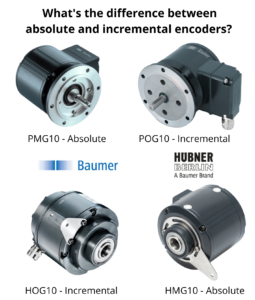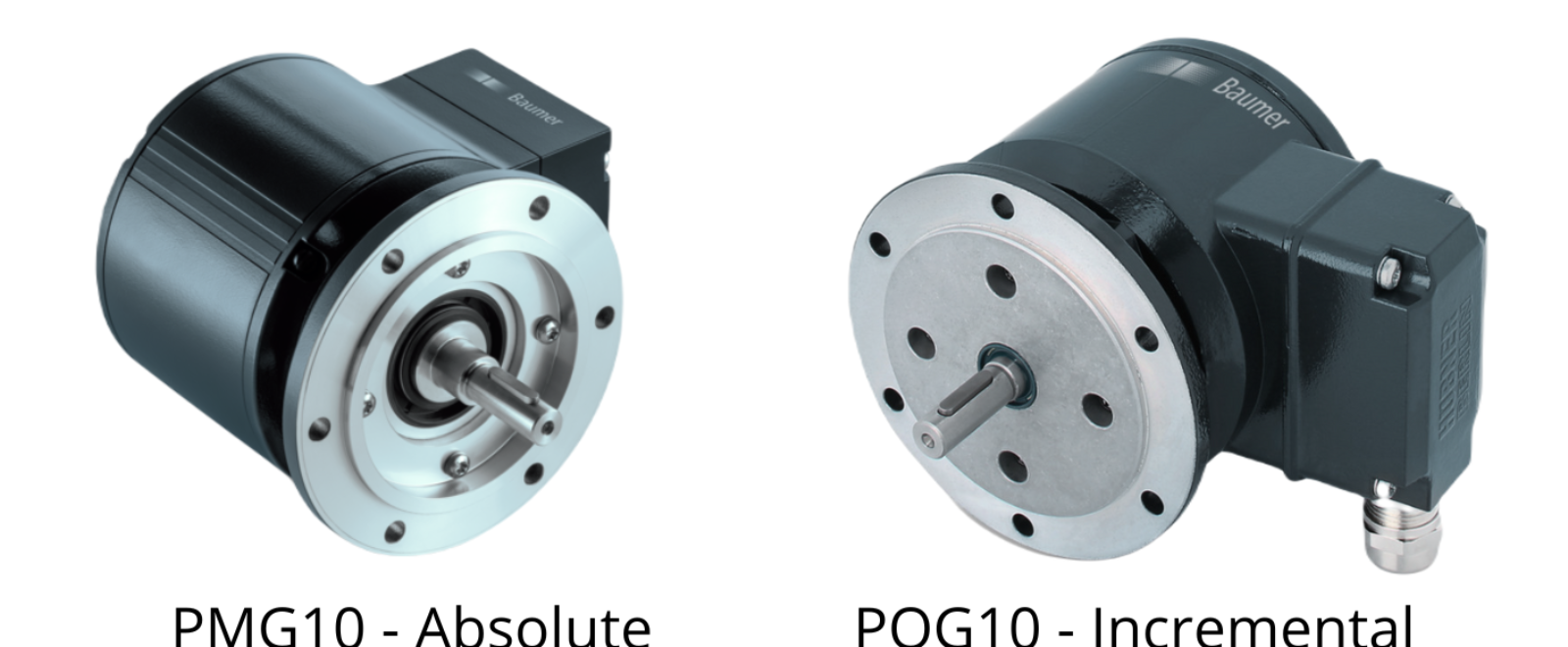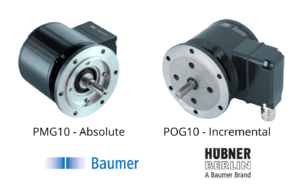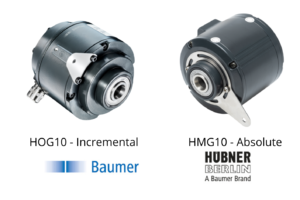Identifying angular and linear motion plays a pivotal role in machine control within the electronics factory. The microcomputers embedded in these machines frequently require data on the position (POS), the direction of rotation (DOR), and speed of rotation (SOR) of a shaft or axle, necessitating conversion into digital format. Optical encoders serve as electro-mechanical devices for measuring angular or linear positions. The encoders utilized for angular detection are commonly known as rotary or shaft encoders (SE).
These SEs find increasing application in various consumer and industrial equipment roles. Rotary encoders, or shaft encoders, can be broadly classified into absolute or incremental types. The difference between incremental and absolute encoders is the following: An absolute encoder (AE) provides position information even in the event of a power loss, while an incremental encoder (IE) is suitable for applications requiring speed and direction information. Both AE and IE can be utilized for angular as well as linear displacements, although their operating principles differ. Now, let’s delve into a comprehensive comparison of their distinguishing features.
Absolute encoders
In the field of motion control and precision engineering, absolute encoders (AEs) play a critical role in accurately determining position information. These electro-mechanical devices provide invaluable data even in the event of power loss, making them an essential component in various applications. Below, we will delve into what an absolute encoder is, how it works, and its significance in achieving precise positioning.
What is an absolute encoder?
An absolute encoder is a type of sensor that provides position information without requiring a reference point. Unlike its counterpart, the incremental encoder, which relies on counting pulses, an absolute encoder directly translates the position of a rotating shaft or linear displacement into a unique digital code. This code represents the exact position within the encoder’s resolution range.
Each position within the encoder’s resolution range corresponds to a specific code, allowing for precise position determination. Even in the event of a power loss, absolute encoders retain position information, eliminating the need for recalibration or re-homing. This characteristic makes them ideal for applications where maintaining positional accuracy is critical. Absolute encoders are commonly used in robotics, CNC machines, and industrial automation systems.
The working principle of an absolute encoder
Absolute encoders employ various techniques to determine position accurately. One common approach is the use of multiple concentric tracks or discs, each divided into segments, with unique code patterns assigned to each segment. These patterns can be binary, gray code, or other coding schemes. As the encoder shaft or displacement changes, the segments pass over sensors, enabling the encoder to detect the precise position and generate the corresponding digital code.
Significance in Precise Positioning
The key advantage of absolute encoders lies in their ability to retain position information even during power loss or system restarts. This is crucial in applications where maintaining positional accuracy is vital, such as robotics, CNC machines, and industrial automation. When power is restored, the encoder provides the exact position without requiring any additional reference or homing sequence, thereby reducing downtime and improving operational efficiency.
Types of Absolute Encoders
Absolute encoders can be further classified into single-turn and multi-turn encoders. Single-turn encoders provide position information within one full revolution, while multi-turn encoders can measure multiple revolutions, enabling accurate position tracking over extended ranges. Multi-turn encoders often employ additional gears or optical systems to achieve this extended measurement capability.
Single turn encoders
Single-turn encoders are designed to provide precise position information within a single revolution of the encoder shaft or linear displacement. These encoders are commonly used in applications where the range of movement is limited to one complete revolution, such as in robotic joints or control knobs. Single-turn encoders offer high resolution and accuracy within their specified range, allowing for precise positioning and control.
Multi-turn encoders
On the other hand, multi-turn encoders are specifically engineered to measure multiple complete revolutions, enabling accurate position tracking over extended ranges. These encoders are suitable for applications where continuous and uninterrupted position monitoring is crucial, such as in heavy machinery and cranes. Multi-turn encoders utilize additional gears, optical systems, or electronic mechanisms to extend their measurement capability beyond a single revolution.
The extended measurement capability of multi-turn encoders is achieved through the integration of a secondary counting mechanism that keeps track of the number of full revolutions made by the encoder. This additional mechanism ensures that position information remains accurate and reliable, even when the encoder undergoes multiple rotations. By combining the counts from both the single-turn and multi-turn mechanisms, multi-turn encoders provide a comprehensive and continuous representation of the position, offering precise and reliable information over a broader range of movement.
Additional gears in multi-turn encoders
The integration of additional gears or optical systems in multi-turn encoders allows for efficient and accurate tracking of multiple revolutions. The gears or optical systems act as an intermediary between the encoder shaft and the counting mechanism, translating the rotational movement into countable signals. These components are precisely designed to handle the increased range of movement, ensuring smooth and reliable operation throughout the entire measurement span.
In summary, while single-turn encoders offer precise position information within a single revolution, multi-turn encoders extend the tracking capability to measure multiple complete revolutions. The incorporation of additional gears or optical systems enables multi-turn encoders to accurately monitor position over an extended range, making them suitable for applications that require continuous and uninterrupted position tracking. By understanding the distinctions between single-turn and multi-turn encoders, engineers can select the appropriate type to meet the specific requirements of their applications, ensuring accurate and reliable position monitoring.
Applications of Absolute Encoders
The versatility of absolute encoders makes them indispensable in numerous industries and applications. They are widely used in robotic arms and manipulators, where precise position control is essential. Next to heavy-duty machinery and cranes, absolute encoders also find applications in aerospace, automotive, medical devices, and scientific research, contributing to tasks such as satellite positioning, automated vehicle guidance, and telescope positioning.
In conclusion, absolute encoders are critical components in achieving precise positioning in motion control systems. Their ability to provide accurate position information, independent of power loss or system restarts, sets them apart from other types of encoders. With their wide range of applications across industries, absolute encoders continue to play a vital role in enabling advanced automation, robotics, and high-precision engineering.
Incremental Encoders
In the world of motion control and position sensing, incremental encoders are key components that enable accurate measurement and control of rotational or linear displacement. In the following paragraphs, we will explore what an incremental encoder is, how it operates, and its significance in various applications.
What is an Incremental Encoder?
An incremental encoder is a type of sensor that generates a series of pulses or counts as an object moves. Unlike absolute encoders, which provide the exact position information, incremental encoders focus on tracking changes in position or movement relative to a reference point. By counting the pulses, the encoder can determine the distance traveled, speed, and direction of the moving object.
Incremental encoders track changes in position or movement relative to a reference point. They generate a series of pulses or counts as the object moves, providing information on the distance traveled, speed, and direction. Incremental encoders do not provide absolute position information, but rather the relative changes from the reference point. To determine the absolute position, incremental encoders require a separate reference point, often called a “home” position. Incremental encoders are widely used in applications where real-time feedback on movement is required, such as motor control systems, conveyor systems, and robotic arms.
The working principle of an incremental encoder
The working principle of an incremental encoder is based on the concept of generating pulses or signals as the object moves. It consists of a disc with evenly spaced slots or lines, and a light source and sensor combination. As the disc rotates or moves linearly, the light source shines through the slots or lines onto the sensor, generating electrical pulses. The number of pulses generated per unit of movement determines the resolution of the encoder.
Significance in Position Sensing
Incremental encoders are widely used in various applications where relative position sensing is required. They provide real-time feedback on the movement of objects, allowing precise control and monitoring. Industries such as robotics, industrial automation, and CNC machining heavily rely on incremental encoders to accurately measure distances, speeds, and positions, enabling precise positioning and control.
Types of Incremental Encoders
Incremental encoders can be further categorized into two types: single-channel and quadrature encoders. Single-channel encoders generate a single pulse per increment, providing basic position information. On the other hand, quadrature encoders produce two square wave signals, shifted by 90 degrees. These signals, often referred to as A and B channels, allow for enhanced precision in determining both position and direction of movement.
These channels are precisely shifted by 90 degrees relative to each other. The phase difference between the A and B channels enables enhanced precision in determining not only the position but also the direction of movement. By closely examining the time relationship and transitions between these two channels, sophisticated motion control systems can accurately discern whether the object is moving in a clockwise or counterclockwise direction.
The utilization of quadrature encoders
The utilization of quadrature encoders in complex applications where precise position and direction information are paramount has become increasingly prevalent. These encoders offer a significant advantage in tasks such as robotics, automated machinery, and motion control systems that require fine-grained control over positioning and movement. By harnessing the power of quadrature encoding, engineers can unlock the ability to implement advanced algorithms and control strategies, allowing for smoother and more efficient operation of the overall system.
Index pulse
It is worth noting that quadrature encoders provide additional features beyond position and direction information. Some quadrature encoders also include an index pulse, also known as a Z channel or marker pulse. This pulse occurs once per revolution and serves as a reference point, aiding in determining the absolute position of the encoder. Incorporating the index pulse enables a hybrid functionality that combines the advantages of both absolute and incremental encoders, further expanding the range of applications where quadrature encoders can excel.
In summary, while single-channel encoders provide basic position information, quadrature encoders stand out by offering enhanced precision through the utilization of two square wave channels shifted by 90 degrees. This allows for precise determination of both position and direction of movement. With the added functionality of an index pulse, quadrature encoders become even more versatile, offering a hybrid solution that combines the benefits of absolute and incremental encoders. The choice between single-channel and quadrature encoders ultimately depends on the specific requirements of the application, striking a balance between simplicity, cost, and the need for advanced precision and control.
Applications of Incremental Encoders
The versatility of incremental encoders makes them essential in various industries and applications. They are commonly used in motor control systems, where precise speed and position control are crucial. Incremental encoders also find applications in conveyor systems, robotic arms, and machine tools, contributing to tasks such as precise positioning, speed control, and synchronization.
Incremental encoders play a vital role in position sensing and motion control systems. By tracking changes in position relative to a reference point, they enable accurate measurement and control of rotational or linear displacement. With their wide range of applications in industries such as robotics, automation, and machining, incremental encoders continue to be indispensable components in achieving precision and control in motion-based systems.

Understanding the Difference between Absolute and Incremental Encoders
In summary: in the world of motion control and position sensing, encoders play a crucial role in accurately determining position, speed, and direction. Two commonly used types of encoders are absolute encoders and incremental encoders. While they serve the same fundamental purpose of measuring position, there are distinct differences in their working principles and applications. In this article, we will explore the basics of absolute and incremental encoders, as well as their operating principles, to provide a clear understanding of their differences.
The key difference between absolute encoders and incremental encoders lies in the way they provide position information. Absolute encoders directly translate the position of a rotating shaft or linear displacement into a unique digital code, allowing for precise position determination without the need for a reference point. On the other hand, incremental encoders track changes in position relative to a reference point and generate a series of pulses or counts as the object moves. While absolute encoders retain position information even in the event of a power loss, incremental encoders require a separate reference point or “home” position for determining absolute position.
The choice between absolute and incremental encoders depends on the specific requirements of the application. Absolute encoders are ideal for tasks where maintaining positional accuracy is critical, such as in robotics, CNC machines, and industrial automation systems. They offer high precision and resolution, enabling accurate position determination. On the other hand, incremental encoders are well-suited for applications that require real-time feedback on movements, like motor control systems, conveyor systems, and robotic arms. They provide relative changes in position and offer high-speed operation.
By understanding the differences between absolute and incremental encoders, engineers and system integrators can make informed decisions when selecting the appropriate encoder for their specific needs. Whether it’s achieving precise positioning, tracking relative movement, or ensuring continuous operation, the choice between these two types of encoders plays a crucial role in optimizing performance and efficiency in motion control systems. Check out Euro HÜBNER for more information and products.



